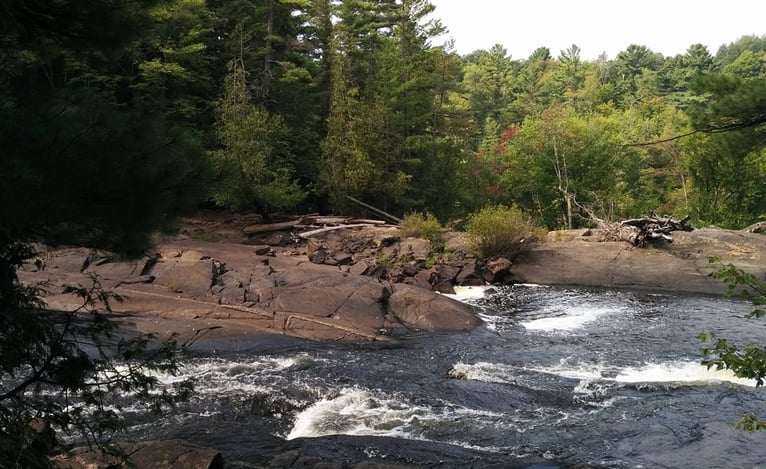Where to Start
The fabric, method of acquisition and management of unpatented mining claims in Ontario is about to change.
Are you ready?
The traditionally manual system of ground and paper staking and managing unpatented mining claims in Ontario will be replaced with an innovative online Mining Lands Administration System referred to as “MLAS”. Upon “conversion” to the online system, all active unpatented claims will be converted from their place on the land being legally defined by claim posts on the ground or by township survey to being legally defined by their cell and coordinate location on the provincial grid in CLAIMaps. Through this process, the legacy claims will translate into the new cell based grid system and be defined as cell claims and boundary claims within a cell.
The conversion process will change the claim fabric, IDs, work obligations, due dates, method of management and regulatory framework for unpatented mining claims in Ontario. The transition to MLAS will bring greater accuracy and certainty of the location of claim holders’ mining claims, rights and interests, and offer powerful and flexible tools for the management of their land assets.
Even though conversion will proceed on all unpatented claims regardless of a claim holder’s level of participation, this is not intended to be a passive process for claim holders. Get engaged, be aware of the changes, mitigate any risks and take advantage of the many benefits and one time opportunities that conversion will offer.
Where to Start:
- Run a Conversion Demo to find out how your claim boundaries and obligations will change:
This is a great place to start your conversion plan and is now available 24 x 7 online through CLAIMaps IV. The tool will take you through a mock conversion to show you what your converted lands and new assessment requirements will look like post conversion. - Georeference your unpatented mining claims to ensure they are accurately represented in CLAIMaps:
The claim boundaries that will be converted are those that are represented in CLAIMaps in advance of conversion (“final determination”). However, that may not necessarily be the location of your claim posts on the ground. It is critical that you look at CLAIMaps to review the digital representation of your claim boundaries. If there is a discrepancy between the field location and the digital representation of those boundaries on CLAIMaps, you can rectify this by submitting a georeferencing report on eligible claims to the MNDM no later than August 31, 2017. The MNDM’s Georeferencing Standards at Ontario.ca/ckjx outlines the guidelines for this process. - Review underlying agreements and prepare a Claim Boundary Report to maintain the spatial extent of agreement obligations as they were originally intended:
Understand your land package and the terms of any underlying agreements. If you have a business requirement to retain the integrity of certain claim boundaries that would otherwise change through conversion, you can provide the MNDM with a Claim Boundary Report (“CBR”). This will prevent those claims from merging at conversion. You can draft unlimited iterations of this report through the new Conversion Demo tool in CLAIMaps. It will also generate a downloadable forecast and map of each CBR scenario drafted so you can optimize your land assets and obligations. The process to officially submit this report will be made available in the summer of 2017. Although information on root of title will still be available in the new system, you may also want to consider an addendum to your agreements to address any impacts of conversion on your business arrangements. - Key Claim Holder Conversion Dates:
Mark your calendar with the following target dates:August 31, 2017 (4:30pm EST): Last day to submit Georeferencing report for assessment credits
October 31, 2017 (4:30pm EST): Last day to submit assessment reports. Most transactions will be suspended as of November 1, 2017, through to the full launch of MLAS currently planned for February 6, 2018.
February 6, 2018: Full launch of the new system.
-
Get Connected:
Ensure your address is up to date with the Ministry:
MLAS user names, passwords and pin numbers will be sent to your legal address as shown in the MNDM’s records. If your address is different from what they have on file, you will not receive the information you will need to perform any transactions in MLAS.
Check the Mining Act Modernization (MAM) website:
The MAM website http://www.ontario.ca/miningact is the best place to look for information related to MAM. It is updated regularly with information you need to successfully prepare for conversion.
Subscribe to MAM’s Update Bulletins:
This can be done on the MAM website. Subscribers will automatically receive notices of new information and bulletins being posted.
Participate regularly in the MNDM’s information sessions:
The Ministry has carried out hundreds of consultations and information sessions with industry, stakeholders, and Indigenous groups throughout MAM phase III and continues to make communications and engagement a top priority. If you have missed any of these sessions or if you have any questions, concerns or comments, get proactive and reach out to the Ministry at MININGACT@ontario.ca.
Smart has a plan. Ignorance has a story. What is yours?
Tania Poehlman, MSc.
Sr. Lands Manager for Ronacher McKenzie Geoscience
Providing efficient & strategic lands management for the exploration and mining sector





